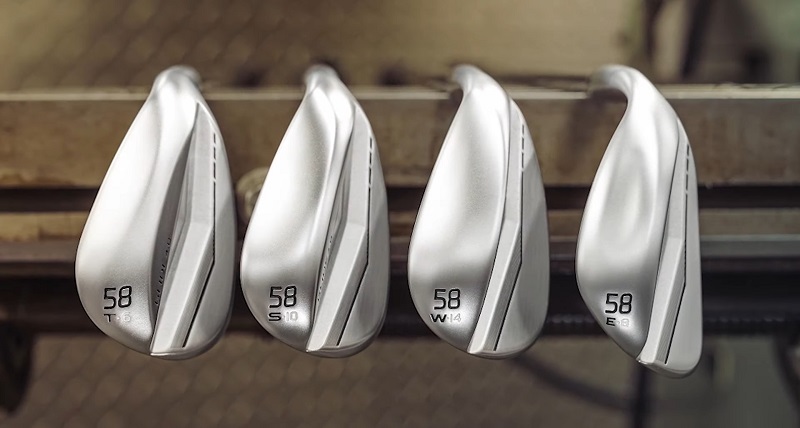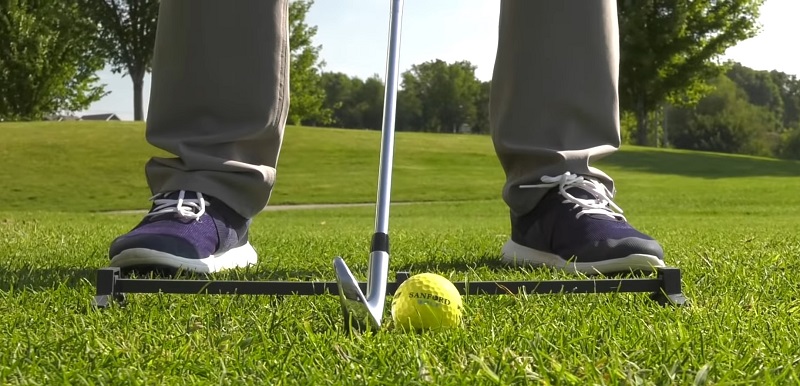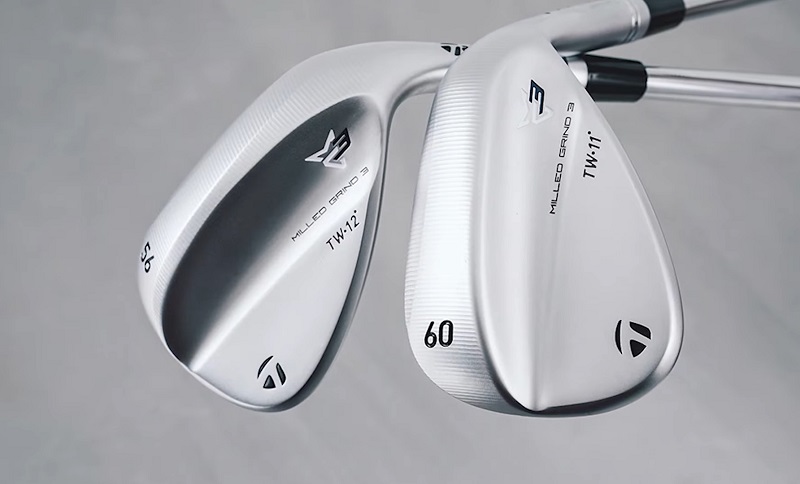One of the most crucial golf clubs to have in your bag is the sand wedge. As the name suggests, this specialized club is designed to help golfers get out of sand traps and bunkers, which can often be one of the trickiest parts of the game. What sets the sand wedge apart from other clubs is its degree of loft, which can range from 54 to 58 degrees or even more.
This added loft helps players get the ball up and out of the sand more easily. To truly understand the importance of a sand wedge and how it stands out among other clubs, let’s take a closer look at what makes it unique.
What Is A Sand Wedge?

A sand wedge (SW), as the name suggests, is a golf club that is designed to help golfers get out of sand traps and bunkers. It is a type of wedge, which is a class of golf clubs that are designed for short, high-trajectory shots. Sand wedges typically have a degree of loft that ranges from 54 to 58 degrees.
The key characteristics of a sand wedge include a wide sole, a heavy clubhead, and a shorter shaft than other types of golf clubs. The wide sole helps the club glide through the sand, while the heavy clubhead helps generate the necessary power to lift the ball out of the bunker. The shorter shaft helps the golfer maintain control and precision when hitting short shots.
Sand wedges differ from other types of golf clubs in several ways. For example, they have a higher degree of loft than other wedges, which makes them ideal for hitting high-trajectory shots. They also have a shorter shaft than other clubs, which makes them easier to control when hitting short shots. Additionally, the heavy club head of a sand wedge makes it easier to generate the necessary power to get out of sand traps and bunkers.
In the next section, we will explore the different degrees of loft that are available for sand wedges and how to choose the right degree of loft for your game.
What Are Sand Wedge Degrees?
Sand wedge degrees refer to the degree of loft in a sand wedge golf club, which is the angle between the clubface and the shaft. This loft angle affects the trajectory and distance of the ball when hit.
Sand wedges typically have a higher degree of loft than other types. The high degree of loft helps the ball fly high into the air, which is important when getting out of a sand trap or bunker. In addition to the degree of loft, the bounce angle, which is the angle between the sole of the club and the ground, is also an important consideration in sand wedge design.
The bounce helps the club glide through the sand, preventing it from digging too deep. Choosing the right degree of loft and bounce for your sand wedge is crucial for your golf game and depends on factors such as your skill level and the course conditions.
What Are The Common Sand Wedges Degrees?

The most common loft degrees for sand wedges are 54°, 56°, and 58°, although some manufacturers offer sand wedges in other lofts as well. Each loft degree offers unique benefits and can be used to achieve specific shots and trajectories.
54 degrees
- This sand wedge has a lower degree of loft compared to other sand wedges, making it suitable for longer bunker shots.
- The lower degree of loft also means that the ball will travel farther but with less height.
- A 54-degree sand wedge is ideal for golfers with a faster swing speed and those who need to hit longer bunker shots.
- However, it may not be the best choice for players who struggle with bunker shots and need more loft to get the ball out of the sand.
56 degrees
- This is the most common degree of loft for a sand wedge.
- It offers a good balance between loft and distance, making it suitable for various bunker shots.
- A 56-degree sand wedge is versatile enough for use in various playing conditions, and it is a popular choice among golfers of all skill levels.
- It’s a great choice for golfers who want a reliable and versatile sand wedge.
58 degrees
- This sand wedge has a higher degree of loft, making it ideal for short, high-trajectory bunker shots.
- The higher degree of loft also means that the ball will travel a shorter distance but with a higher arc.
- A 58-degree sand wedge is a good choice for golfers who struggle with bunker shots and need more loft to get the ball out of the sand.
- However, it may not be the best choice for players who need to hit longer bunker shots, as the ball will not travel as far.
Proper Technique For Using A Sand Wedge

Using a sand wedge properly requires a combination of good technique and an understanding of the shot at hand. Here are some general steps to follow when using a sand wedge:
Position yourself correctly: When approaching the bunker, position your body slightly open to the target with your feet, hips, and shoulders all pointing left of the target (for right-handed golfers). This open stance helps you hit the sand first and ensures that your clubface points in the correct direction.
Position the ball correctly: Place the ball in the center of your stance or slightly forward, closer to your front foot. This will help you hit the sand first, which is crucial for getting the ball out of the bunker.
Use the bounce of the club: The bounce is the curved part of the club’s sole. When hitting a bunker shot, you want to use the bounce of the club to help the club slide through the sand. Open the clubface slightly, and keep the clubface pointing to the sky throughout your swing.
Take a full swing: Take a full swing and aim to hit the sand about 2 inches behind the ball. The key is to hit the sand first, not the ball. This will help lift the ball out of the bunker and onto the green.
Follow through: After hitting the sand, follow through as you would with any other shot. Swing through the ball and continue your follow-through toward the target.
Practice: The key to using a sand wedge properly is to practice. Spend time on the practice range hitting bunker shots until you feel comfortable with your technique.
Common Mistakes To Avoid When Using A Sand Wedge
Hitting the ball first: This is one of the most common mistakes when hitting a bunker shot. Instead of hitting the sand first, the golfer strikes the ball directly, which can result in a thin or bladed shot. Remember to aim to hit the sand about 2 inches behind the ball.
Not opening the clubface enough: Opening the clubface helps to create the loft and bounce needed to slide through the sand. If the clubface is not open enough, the club’s leading edge can dig into the sand and cause the shot to come up short.
Taking too much sand: While hitting the sand is essential when hitting a bunker shot, taking too much sand can lead to a shot that travels too short. You want to take just enough sand to get the ball out of the bunker and onto the green.
Using too much wrist action: While a little wrist action can be helpful when hitting a bunker shot, too much can cause the shot to fall short or fly too far. Focus on using a full swing with a firm wrist to ensure a solid shot.
Not practicing enough: Like any golf shot, hitting a bunker shot requires practice. Spend time on the practice range hitting bunker shots to build your confidence and develop your technique.
Tips For Practicing With A Sand Wedge

Here are some tips for practicing with a sand wedge:
Start With The Basics
Practicing with a sand wedge is a great way to improve your bunker play and lower your scores on the course. To start, it’s important to begin with the basics and focus on developing your technique. This can involve practicing chip shots around the green to get a feel for your sand wedge and build your confidence.
Practice In Different Conditions
Practicing in different conditions to simulate the variety of bunker shots you may face on the course is important. This can involve practicing in different bunkers with varying depths and slopes and experimenting with different stances to find what works best for you.
Use Alignment Aids
Using alignment aids such as rods or clubs can also help position your body correctly for bunker shots. Additionally, focusing on consistency is crucial for hitting good bunker shots. This involves hitting the sand in the same spot every time and making solid contact with the ball.
Experiment With Different Lofts
It’s important to experiment with different lofts of sand wedges to find what works best for your game. Keeping track of your progress by recording your stats during practice can also help you identify areas that need improvement and track your progress over time.
Following these tips and practicing regularly can improve your bunker play and become a more confident golfer.
What Factors Need To Consider When Choosing A Sand Wedge Degree?
Selecting the right sand wedge degree is an important part of your golf game, as it can greatly affect your bunker play and overall scoring. Here are some factors that need to consider when selecting a sand wedge degree:
Loft Angle
The loft angle is crucial when selecting a sand wedge degree. The loft angle refers to the angle between the clubface and the ground, which determines the height and trajectory of the ball. Generally, higher loft angles create a higher trajectory, while lower loft angles create a lower trajectory. Golfers with slower swing speeds may benefit from higher loft angles, while those with faster swing speeds may prefer lower loft angles.
Bounce Angle
The bounce angle refers to the angle between the leading edge of the clubface and the sole. The bounce angle can affect the club’s ability to glide through the sand or rough, impacting the ball’s spin and trajectory. Golfers who play on courses with soft or fluffy sand may benefit from higher bounce angles, while those who play on courses with firm sand may prefer lower bounce angles.
Swing Type and Technique
Your swing type and technique can also influence the degree of your sand wedge. Golfers with a steep swing path may prefer higher loft angles to help get the ball up quickly, while those with a shallow swing path may prefer lower loft angles. Additionally, golfers who use an open-face technique may benefit from higher loft angles, while those who use a closed-face technique may prefer lower loft angles.
Course Conditions
The course conditions can also impact the degree of your sand wedge. Courses with deep bunkers or thick rough may require higher loft angles to get the ball out and onto the green. Similarly, courses with hard-packed sand or firm fairways may require lower loft angles to control spin and trajectory.
Personal Preference
Ultimately, personal preference plays a significant role in choosing the degree of your sand wedge. Golfers should experiment with different degrees to find the one that feels most comfortable and suits their individual needs and playing style.
Related post:
- How To Choose The Right Golf Shaft For Maximum Performance
- Mallet vs Blade Putters: Which is the Better Choice?
- Pitching and Gap, Sand & Lob Wedge Lofts: The Ultimate Guide
Wrap-Up & Final Thoughts
Knowing the degrees of a sand wedge is crucial for golfers who want to improve their short game and reduce the number of shots it takes to get out of a bunker. With its flatter sole and increased bounce, a sand wedge can help golfers navigate through tricky sand traps more efficiently.
By considering the loft and bounce of various sand wedges, golfers can determine the best wedges that fit their unique style, considering the level of spin, accuracy, distance, and shot trajectory required for different situations on the course.
Understanding sand wedge degrees benefits golfers of all skill levels, from beginners to scratch golfers, and can help them become better players.
FAQs
Is 52 Degrees A Wedge Of Sand?
A 52-degree wedge is not typically considered a sand wedge. Sand wedges generally have a higher loft angle, usually between 54 to 58 degrees, which allows the club to slide through sand in bunkers easily. A 52-degree wedge is classified as a gap wedge, used for shots where a golfer needs more distance and height than a pitching wedge but less than a sand wedge.
What Is The 60-wedge Used For?
A 60-degree wedge is commonly called a lob wedge, and it is designed to produce a high trajectory with a steep angle of descent, making it useful for shots that require a soft landing on the green. This wedge is often used to hit over hazards like water or sand, or for short approach shots where the ball needs to be stopped close to the pin.
What Is The Easiest Sand Wedge To Hit?
There are several sand wedges on the market that are designed to be easier to hit out of the sand, and the easiest one for you will depend on your individual preferences and swing style. However, some of the most popular and highly regarded sand wedges for ease of use include Cleveland CBX 2, TaylorMade Hi-Toe Big Foot, Titleist Vokey SM8, Callaway Sure Out 2, etc.
What Sand Wedge Degrees Should I Use For Sand Shots?
Sand wedges typically come in lofts ranging from 54 to 58 degrees, with most players using a 56-degree wedge for sand shots. This loft is generally the best option for getting out of bunkers as it helps create enough backspin and lift to escape the bunker.
What Is Sand Wedge Degree Best For Beginners?
The best sand wedge degree for beginners is usually 56 degrees. This loft allows the golfer to effectively get the ball out of shallow sand traps, as well as be able to hit higher shots when needed.



I consider something truly special in this wweb site.